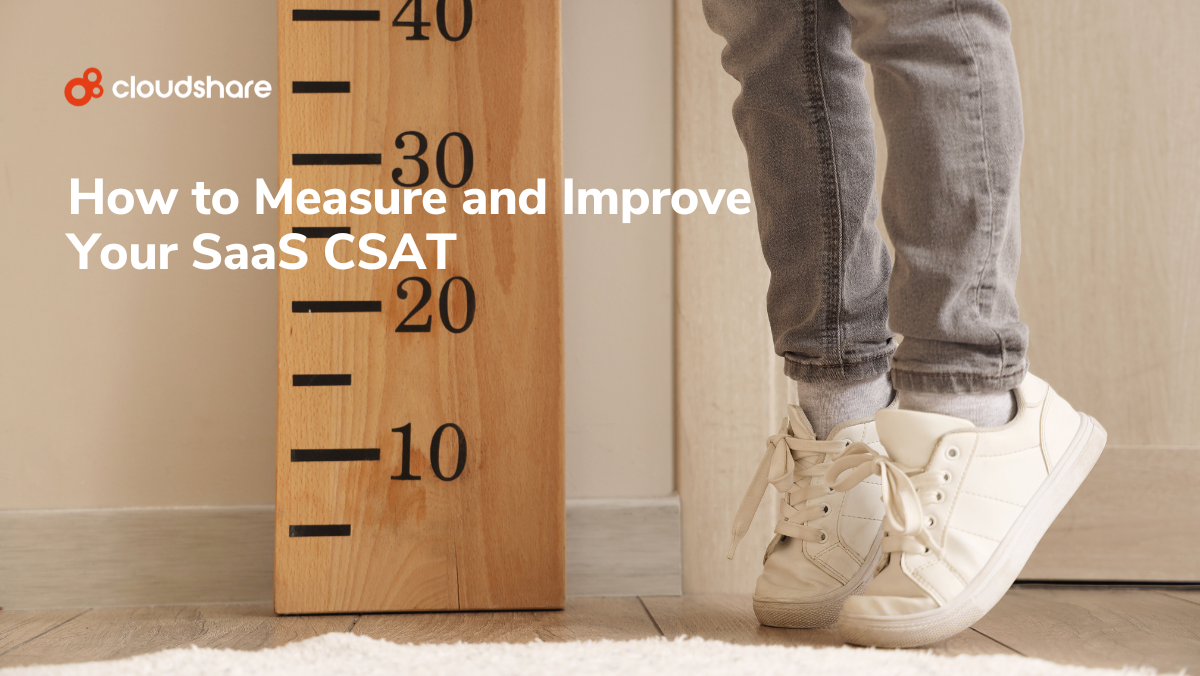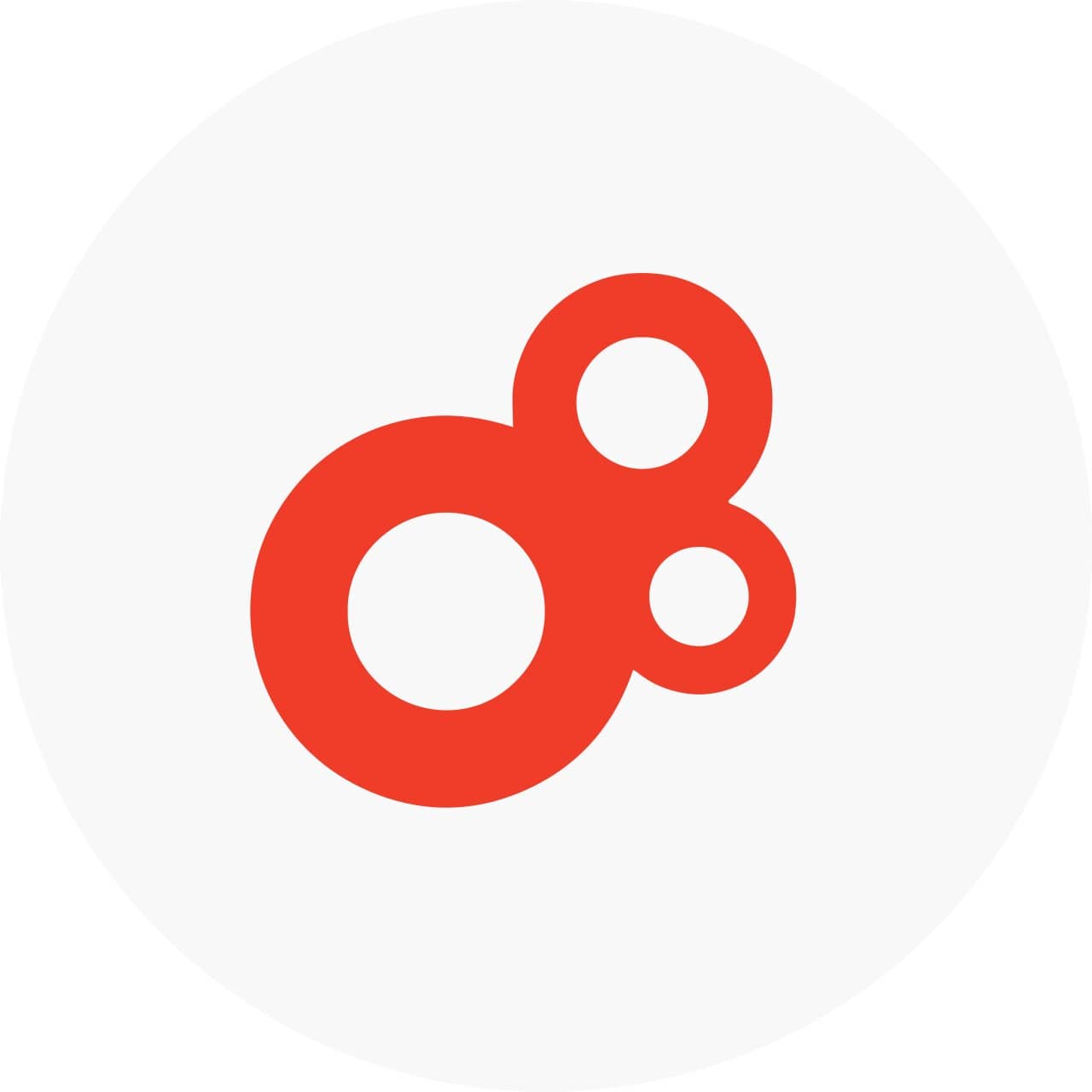
Every software provider needs to be able to answer a series of key questions:
- Is your software meeting customer expectations? How happy are your users? And if they’re unhappy, how likely are they to make the jump to a competitor at the first opportunity?
- What can you do to provide a better user experience?
These are just a few questions you can answer using the Customer Satisfaction (CSAT) metric — often considered the gold standard customer success evaluation.
This blog explains what CSAT is, how it works, and how it differs from other customer success metrics. You’ll also learn several best practices to help you improve your CSAT score.
What is CSAT in SaaS?
CSAT measures how satisfied users are with your software and how many are at risk of churning.
A SaaS company will generally measure CSAT through surveys that ask recipients to rate their satisfaction with the product on a numeric scale, typically 1-5 or 1-10. It then analyzes those surveys to determine what percentage of them are positive.
That percentage is the business’s CSAT score.
How to Calculate Your CSAT
The formula for CSAT is quite simple:
(Positive Survey Responses/Total Survey Responses) x 100
To calculate your CSAT, first define what constitutes a positive response. For instance, you may send a CSAT survey asking 200 customers to rate their satisfaction on a scale from one to five. In this case, four and five are positive responses, and everything else is either neutral or negative.
You receive 94 responses. Of those responses, 67 rated your software a four or five. That’s a CSAT score of 71%.
CSAT vs. NPS and CES
No data point should be considered alone. In addition to tracking CSAT, most companies also measure Net Promoter Score (NPS) and/or Customer Effort Score (CES). Each metric provides insight into a different aspect of the user experience.
NPS measures how likely your customers are to recommend your software to a colleague, friend, or associate on a scale of one to five. It provides you with a general idea of how your users feel about both your software and your company as a whole. It can also help you identify potential brand ambassadors in your user base.
CES asks a customer how easy it is to use a particular feature or solve a particular problem. It’s most commonly associated with customer service interactions. However, it can also provide an idea of how your users feel about new features. Bear in mind, however, that CES is somewhat counterintuitive: a low score of 1 is the best score, while a score of 7 means your software is difficult to use.
Understanding SaaS CSAT Benchmarks
The line for what constitutes an acceptable CSAT score varies based on your industry.
A B2B SaaS company will likely aim for a score of at least 80% to stand out. The current average CSAT score in the B2B Software and SaaS market is in the high 70s as of 2024, meaning any company that ranks lower than 70% may struggle to compete.
Best Practices to Improve CSAT
A key goal of any software company is to achieve as high a CSAT score as possible.
So, here’s a list of best practices you can follow to make that happen.
Create Effective Surveys
Think carefully about when you send your CSAT surveys to maximize your response rate.
Always send cold surveys during regular business hours, avoiding early mornings, late nights, and weekends. The end of a training program, support call, or product demo is also an excellent time for a CSAT survey.
Keep your survey as simple and easy to answer as possible, with no more than five questions. Consider including an open-ended question at the end of each survey to allow customers to share their thoughts – although this won’t affect your CSAT score.
Prioritize Feedback
The insights gained from a CSAT survey are potentially invaluable but they’re meaningless if you don’t act on them.
If a survey indicates that there are issues with one of your products, training modules, or services, you owe it to your customers to investigate the matter. Doing so is also the only way to improve your CSAT score.
Contextualize Your Data
Your CSAT score is surface-level knowledge. You should dig down to learn even more about how your customers experience your products. For instance, look for commonalities between users who responded negatively to your survey to better understand what caused their issues.
You should also track CSAT alongside other metrics and key performance indicators (KPIs) to give you a more complete picture of the overall user experience.
Next Steps: Level Up Your Customer Training
Customer education and customer satisfaction have always gone hand-in-hand.
With that in mind, once you’ve applied the best practices described in this post, check out CloudShare’s 2024 Ultimate Guide to Customer Training, then have a look at The Power of Customer Training Analytics.
FAQs
What is a good CSAT score for a SaaS company?
A good CSAT score for a B2B SaaS company should be at least 80% to stand out from competitors. As of 2024, the industry average is in the high 70s, and anything below 70% may put your company at a competitive disadvantage. Regularly benchmarking your score against industry standards helps you understand how your customer satisfaction levels compare.
How does CSAT differ from NPS and CES metrics?
While CSAT measures immediate customer satisfaction with your product, NPS tracks how likely customers are to recommend your software to others, helping identify potential brand ambassadors. CES measures ease of use for specific features or problem-solving, with lower scores (1) being better than higher scores (7). Each metric provides unique insights into different aspects of customer experience.
What are the best practices for conducting effective CSAT surveys?
Effective CSAT surveys should be sent during business hours or immediately following customer interactions like training or support calls. Keep surveys simple with no more than five questions, include an optional open-ended question for detailed feedback, and always prioritize acting on the insights you receive to close the feedback loop.




